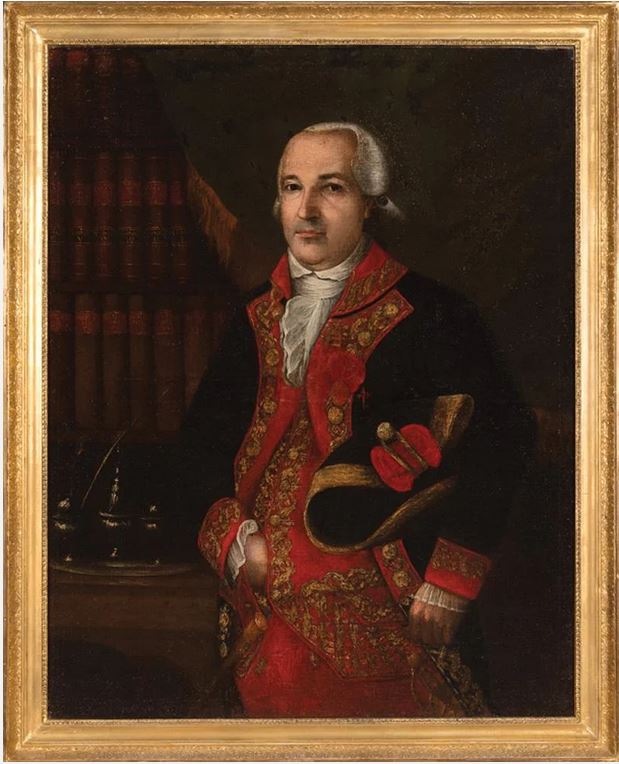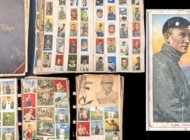NEW ORLEANS — An oil on canvas painting by Jose Francisco Xavier de Salazar y Mendoza (Mexican/Louisiana, 1750-1802) finished at $249,500, including buyer’s premium, in Neal Auction Company’s November 23-24 sale. The 42-by-32¾-inch-work was titled “Portrait of an Important Spanish Colonial Official, likely Sebastian Nicolas Calvo de la Puerta y O’Farrill, Marqués de Casa-Calvo (1751-1820).”
The auction house said the lot saw active interest from the phone bank, selling to a southern private collector.
“This important portrait depicts the highest-ranking known sitter in Salazar’s oeuvre to come to auction and represents a figure intricately tied to Louisiana’s early history,” said Neal Auction Company’s director of fine art Marney N. Robinson.
Neal noted that the portrait offered here represents the only known image of Casa-Calvo. The house was able to approximately date it using his military dress, writing: “when a portrait was painted of one of these prominent figures, the splendid uniform denoting the sitter’s rank was meticulously recorded. An expert on Spanish Colonial military uniform, René Chartrand writes: ‘Rank and corps was determined by the type, styles and metal colours of the buttons, buttonholes and of the embroidery. In this case [painting offered here], there is a single row of gold embroidery (of the specific pattern for generals) edging the collar, cuffs and lapels, which is the distinction of general officers holding the rank of Mariscal de Campo.’ As noted, Casa-Calvo permanently received this rank in 1807, and his depiction here likely represents a brevet appointment to this higher position during his governorship of Louisiana.”
The result of this portrait is timely, as a portrait of Major General Thomas Pinckney (1750-1828) painted by Samuel Finley Breese Morse (1791-1828) was the top lot of Freeman’s November 12 sale when it sold for $187,500. Pinckney represented US interests as he negotiated the 1795 Treaty of San Lorenzo, which granted Americans the use of the Port of New Orleans with access to the Mississippi River.
Casa-Calvo joined the military and became a cadet at the age of 12, attaining the ranks of Lieutenant Colonel, Brevet Colonel and Brigadier General by 1794. By 1799, Casa-Calvo’s military knowledge and expertise had elevated him to one of the highest ranking officials in the Spanish colonies. When Governor Gayoso died in 1799, Casa-Calvo was appointed interim military governor until the arrival of Juan Manuel de Salcedo in 1801. He then left for Cuba, but returned two years later to help carry out the Louisiana Purchase, overseeing all details pertaining to the removal of ships, troops, personnel and records from the region. Beginning in 1805, Casa-Calvo represented Spain when a joint force of Spanish and American engineers, including cartographer Nicolas de Finiels, surveyed the land surrounding the new border, which had been declared at the Sabine River. This demarcation remains there to this day and stands as the deciding shape of the state of Louisiana. A year later in 1806, American governor William C.C. Claiborne ordered Casa-Calvo’s departure from Louisiana and he would not return.
Casa-Calvo was the subject of Gilbert Din’s 2016 book An Extraordinary Atlantic Life: Sebastián Nicolás Calvo de la Puerta y O Farrill, Marqués de Casa-Calvo, in which the author claims to have reframed his legacy, noting that earlier writings were mostly from the perspective of American Colonialists who viewed his absolute allegiance to Spain in an unfavorable light.
For additional information, www.nealauction.com or 504-899-5329.





